#Yvette Guilbert
Explore tagged Tumblr posts
Photo
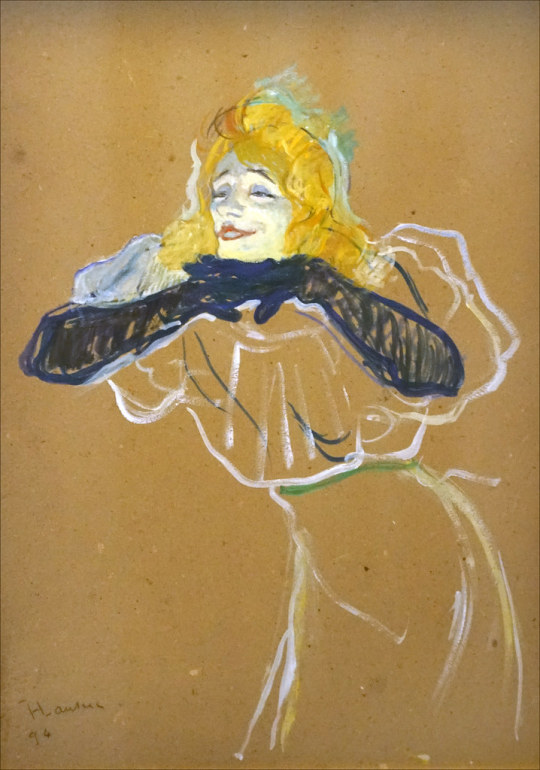
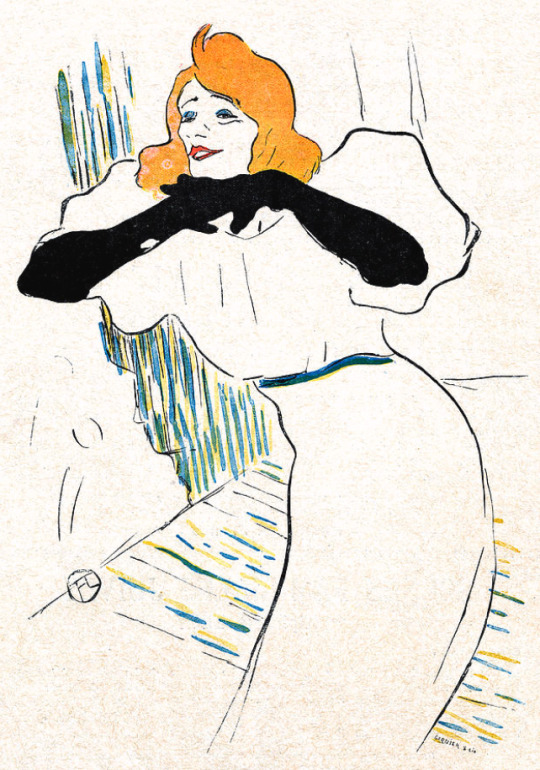
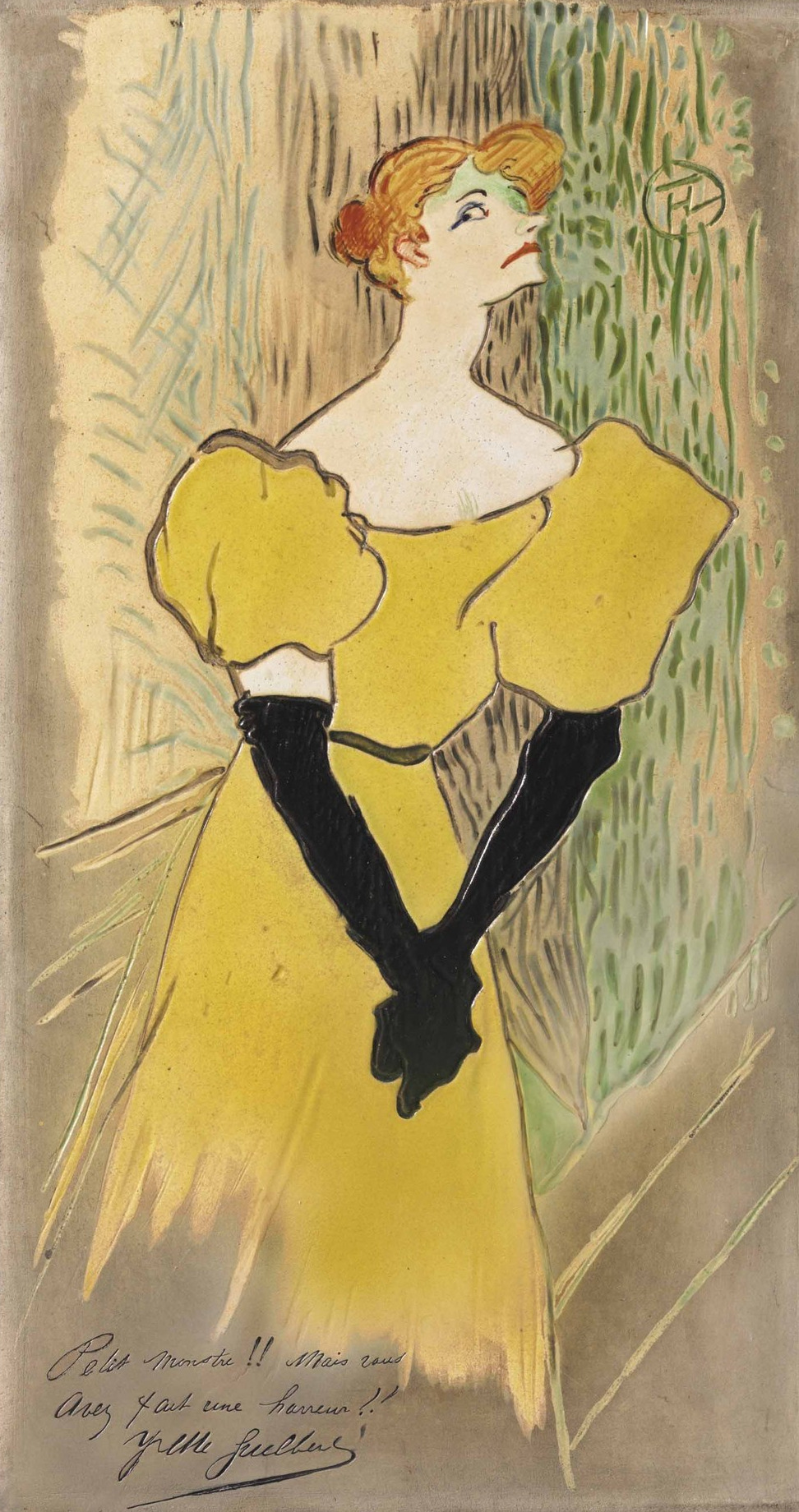
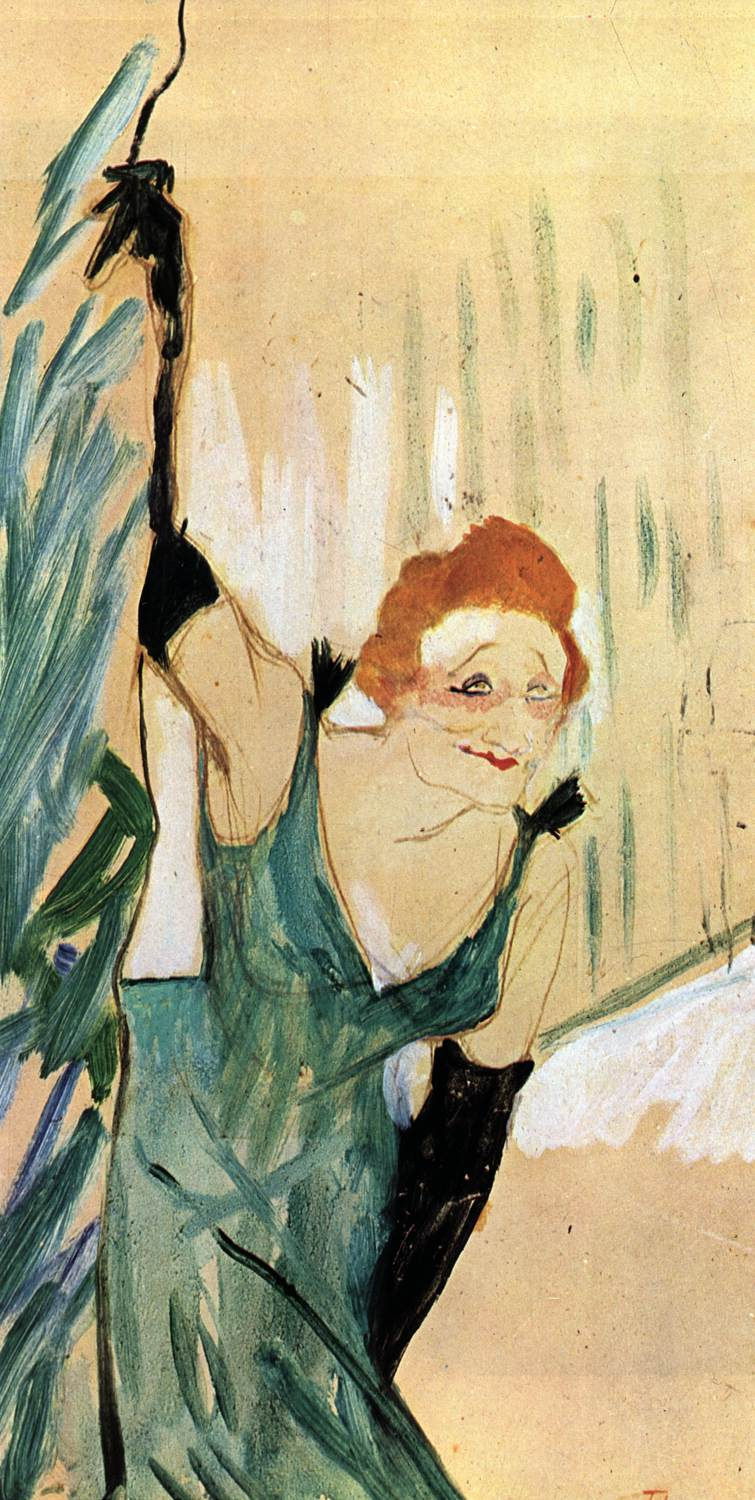

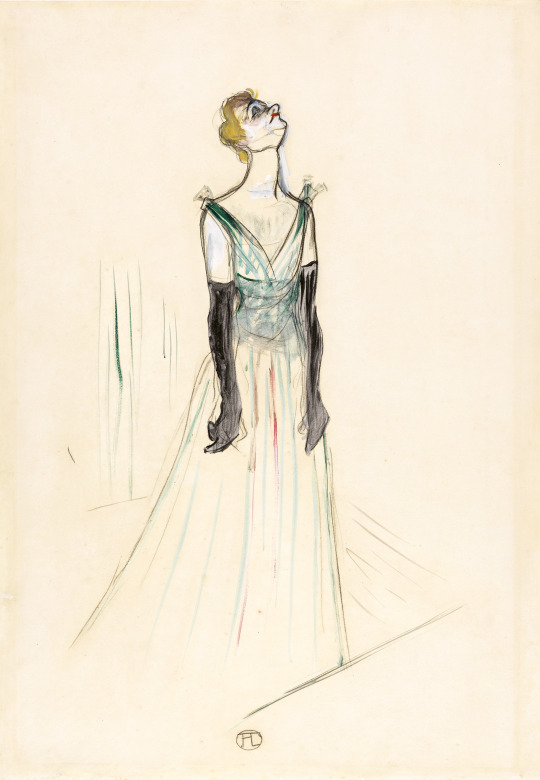
Cabaret singer, "diseuse" and muse Yvette Guilbert in her trademark black opera gloves
artwork by Henri de Toulouse-Lautrec (1890′s)
#yvette guilbert#historicwomendaily#henri de toulouse lautrec#women in art#belle epoque#post impressionism#art history#edwardian#art#history#women in history#art noveau#the belle epoque#historical fashion#post impressionist art#hulderposts#1890s#fashion#avant garde#cabaret#moulin rouge#cool people tag#faves
481 notes
·
View notes
Text
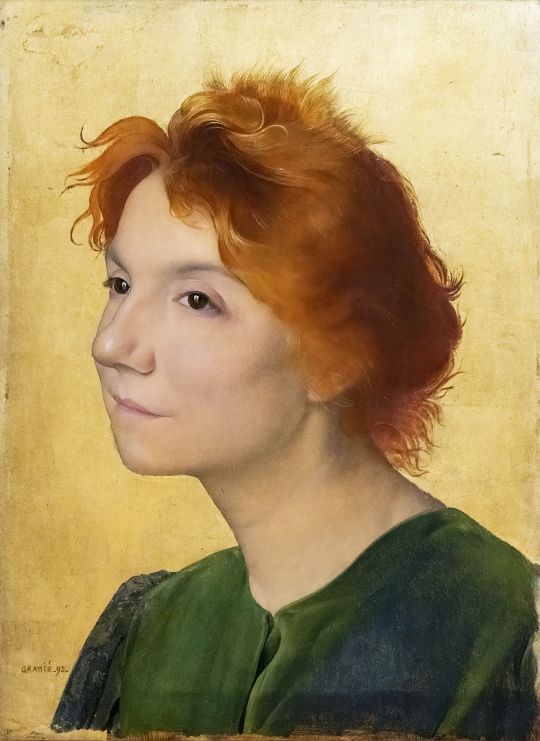
Joseph Granié - Yvette Guilbert (1895)
51 notes
·
View notes
Text
Yvette Guilbert, singer, 1894

painted by Toulouse-Lautrec
3 notes
·
View notes
Text
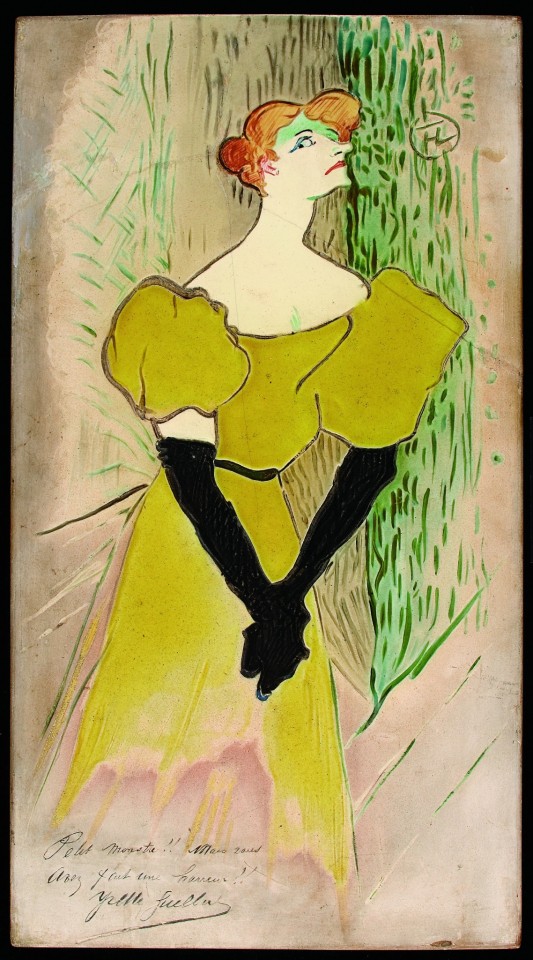

YVETTE GUILBERT 20/1/1865 - 3/2/1944
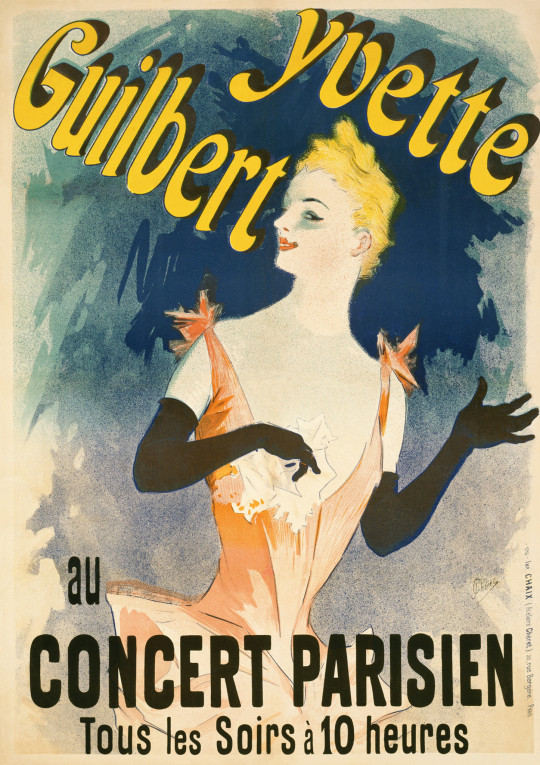

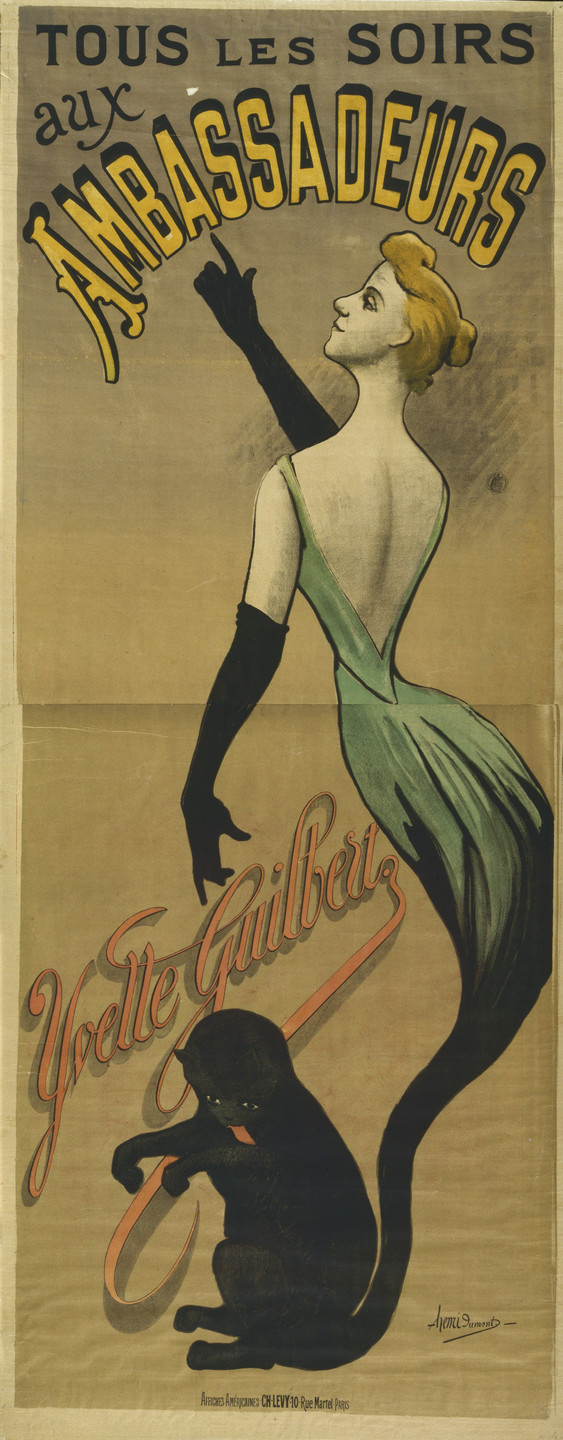
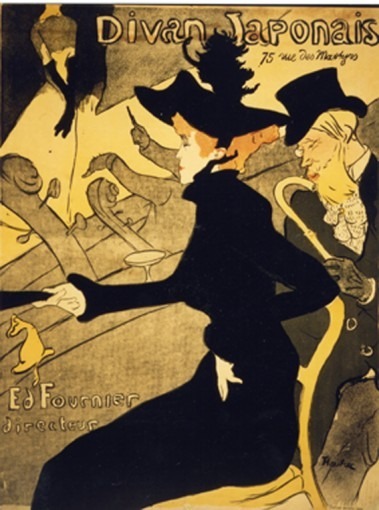
toulouse-lautrec et yvette guilbert
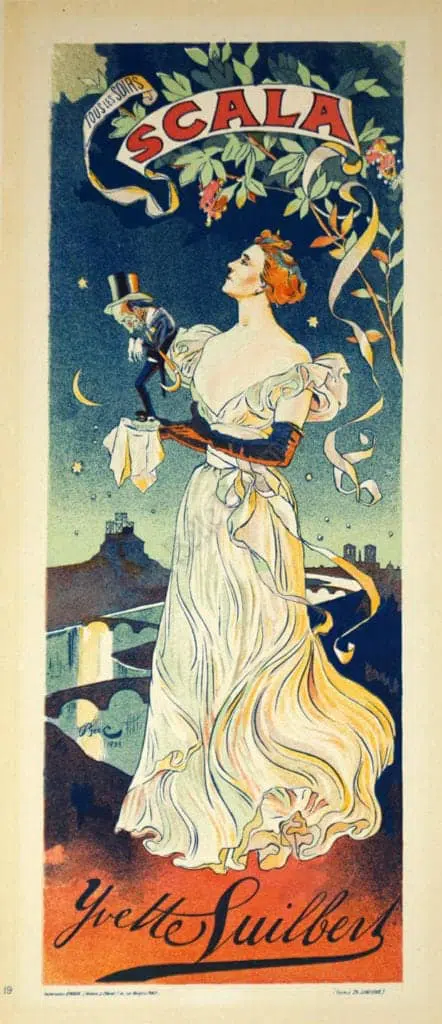
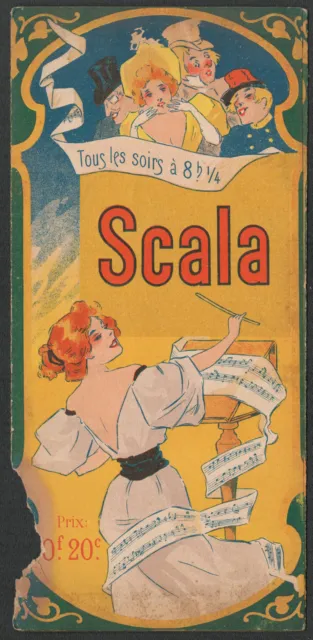
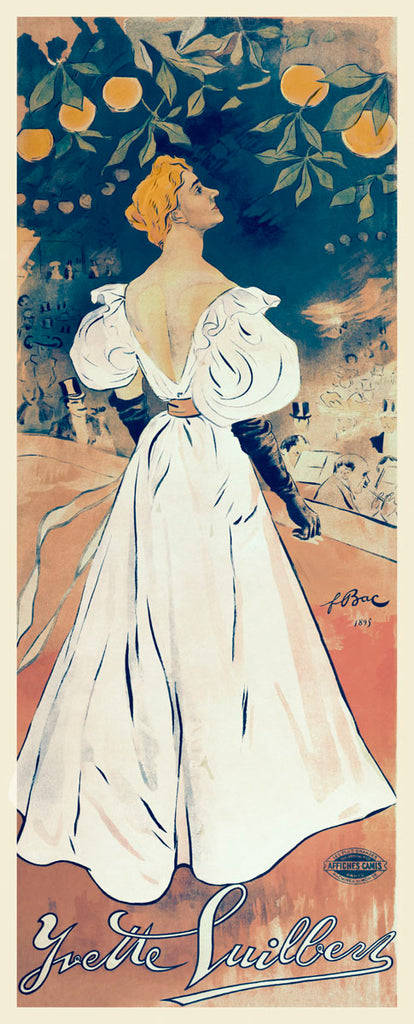
28 notes
·
View notes
Text

Henri de Toulouse-Lautrec
Yvette Guilbert
ca. 1864
#toulouse lautrec#henri de toulouse lautrec#yvette guilbert#french artist#french art#french painter#french painting#paris#france#modern art#art history#aesthetictumblr#tumblraesthetic#tumblrpic#tumblrpictures#tumblr art#tumblrstyle#parisienne#french history#french culture#artists on tumblr#tumblrposts#aesthetic#french aesthetic
8 notes
·
View notes
Text
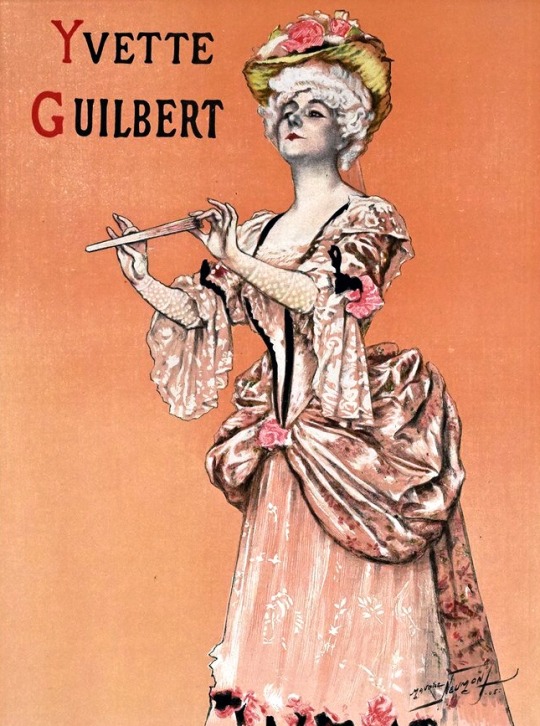
Yvette Guilbert par Maurice Neumont, 1905.
5 notes
·
View notes
Text

Yvette Guilbert on a vintage postcard
#postal#vintage#sepia#old#photography#guilbert#postkarte#historic#briefkaart#postkaart#yvette guilbert#ephemera#yvette#tarjeta#carte postale#photo#postcard#ansichtskarte
7 notes
·
View notes
Text
1908 (Feb issue) Les Modes - Mlle Yvette Guilbert - pastel de Félix Fournery. From gallica.bnf.fr 1462X2146.

#1908 fashion#1900s fashion#Belle Époque fashion#Edwardian fashion#Yvette Guilbert#Félix Fournery#evening dress#pouter pigeon bodice#scoop décolletage#quarter-length sleeves#close skirt#train
4 notes
·
View notes
Photo
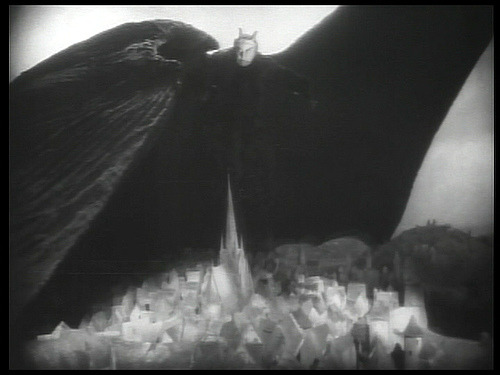
Faust (F.W. Murnau, 1926)
Cast: Gösta Ekman, Emil Jannings, Camilla Horn, Frida Richard, William Dieterle, Yvette Guilbert, Eric Barclay, Hanna Ralph, Werner Fuetterer. Screenplay and titles: Gerhart Hauptmann, Hans Kyser, based on a play by Johann Wolfgang von Goethe. Cinematography: Carl Hoffmann. Art direction: Robert Herlth, Walter Röhrig. Film editing: Effi Bötrich.
Power corrupts, as we knew long before Lord Acton so nicely formulated it for us. It's the truth underlying so many myths, from the Garden of Eden to the Nibelungenlied to the Faust legend. Goethe's Faust is a philosophical poem, a closet drama not designed for stage or film, but that hasn't prevented playwrights, opera librettists, or screenwriters from making the attempt. F.W. Murnau's version is probably the most distinguished cinematic attempt, but not because of its fidelity to the source. Murnau's version works because it concentrates on the power struggle, initially between Good, as represented by the archangel (Werner Fuetterer), and Evil, as represented by Mephisto (Emil Jannings), and later by the attempt of Faust (Gösta Ekman) to obtain mastery over Time. It begins with a wager, borrowed from the book of Job, between the archangel and Mephisto, over whom Faust's soul will belong to. Then it eventually devolves into what is the core of most dramatic treatments of Goethe's story, the seduction of Gretchen (Camilla Horn), with the aid of Mephisto. In the end, both Gretchen and Faust are redeemed by his willingness to sacrifice himself, an abnegation of power. But that too-familiar story is distinguished by Murnau's staging of it, with the significant help of Carl Hoffmann's cinematography and the art direction of Robert Herlth and Walter Röhrig. This is one of the most beautiful of silent films because of the interplay between light and dark, a superb evocation of the paintings of Rembrandt in the composition and lighting of scenes. The tone of the film is set near the beginning by the spectacular image of a gigantic Mephisto looming over a German town, which clearly influenced the similar scene in the "Night on Bald Mountain" sequence of Walt Disney's Fantasia (1940). Jannings manages to be both sinister and gross as Mephisto -- the latter mode most in evidence in his scenes with Gretchen's lustful Aunt Marthe (Yvette Guilbert). (If Guilbert looks familiar it's because, as a Parisian cabaret singer during the Belle Époque, she was the subject of numerous portraits by Toulouse-Lautrec.) This was the last of Murnau's films in Germany: The following year he moved to Hollywood, where he made probably his greatest film, Sunrise. He was soon followed to America by the actor who played Gretchen's brother, Valentin, William Dieterle, who became a prominent Hollywood director.


Top: Yvette Guilbert and Emil Jannings in Faust. Bottom: Yvette Guilbert by Henri de Toulouse-Lautrec.
8 notes
·
View notes
Text

Yvette Guilbert Singing (1894) by Henri de Toulouse-Lautrec
#Yvette Guilbert#Yvette Guilbert Singing#1890s#Monmartre#Moulin Rouge#Henri de Toulouse-Lautrec#victorian#victorian painting#black gloves#Miss Cromwell
5 notes
·
View notes
Text
Faust

Although METROPOLIS (1927) would soon eclipse it as the most technically innovative and expensive German silent, F.W. Murnau’s FAUST (1926, YouTube, though I watched it on disc) is a visual marvel. His fluid camera and creative use of superimpositions give the story an epic dimension, while his careful direction of the actors — particularly Emil Jannings, Camilla Horn and legendary French singer Yvette Guilbert — maintains the story’s human dimensions.
If you know your Goethe or the Gounod opera, you know the plot. The film starts with the contest between heaven and hell for possession of the Earth, with the elderly scholar Faust (Swedish actor Gosta Ekman) as the test case to see if humanity can be corrupted. At first, Mephisto (Jannings) offers Ekman the chance to end the plague (which Mephisto has brought to Faust’s village). When that doesn’t work, he offers him youth, which Ekman spends by first seducing an Italian duchess and then the young, innocent Gretchen (Horn). At that point, the plot sticks fairly close to the opera and the first part of Goethe’s epic.
Murnau had the piece designed on a grand scale, with Faust living in an expressionistic version of a medieval village. When the peasants bring their sick to Faust’s door, they carry them up a staircase that seems to exist outside of time and space. Later, the destitute Gretchen carries her baby past distorted houses into an ever more barren landscape. Ekman is quite effective as the elder Faust, using body language to communicate his age and emotional state through the heavy makeup. His transformation to a young man is something of a letdown, and he falls into the kind of over-expressive acting used by stage performers who hadn’t adapted to the camera. By contrast, Jannings is a sly, witty delight. He’s so funny and almost endearing as he courts Gretchen’s aunt (Guilbert, who’s downright delightful) you may find yourself rooting for him. And Horn, in her first role, has a delicate simplicity that works particularly well in her later mad scenes.

The film is available in German, English, French and bilingual prints that all vary significantly, some with scenes not directed by Murnau. If you’re looking on YouTube, get the restored German print from Moonflix. It not only looks great, but also has a better score than the recycled drivel on the Kino DVD.

#silent film#f.w. murnau#gosta ekman#camilla horn#yvette guilbert#german expressionism#emil jannings
0 notes
Text

Let's Make a Dream (Faisons un rêve…), Sacha Guitry (1936)
#Sacha Guitry#Jacqueline Delubac#Raimu#Arletty#Louis Baron fils#Pierre Bertin#Victor Boucher#Michel Simon#Yvette Guilbert#Marcel Lévesque#Georges Benoît#Myriam Borsoutsky#1936
0 notes
Text
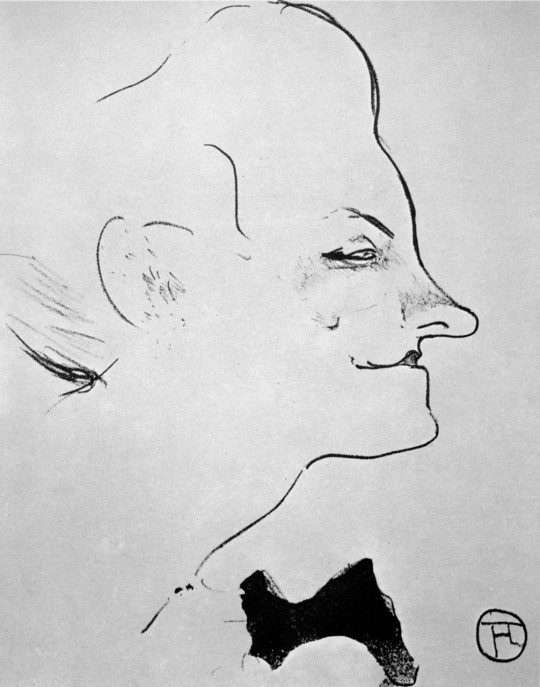
yvette guilbert, french singer 1865 - 1944
17 notes
·
View notes
Text
Le modèle vivant en chanson, derechef avec Yvette Guilbert
Voici Le petit modèle, une autre chanson sur les modèles vivants par Yvette Guilbert (musique de A. Cellarius, paroles d’Yvette Guilbert). Le dessin entourant la partition est de Steinlen.
Pour information, le prix Montyon, cité dans les paroles, était un ensemble de prix, dont un "prix de vertu", créés à l'initiative de Jean-Baptiste Auget de Montyon à la fin du XVIIIe siècle et décernés par l'Académie française et par l'Académie des sciences.
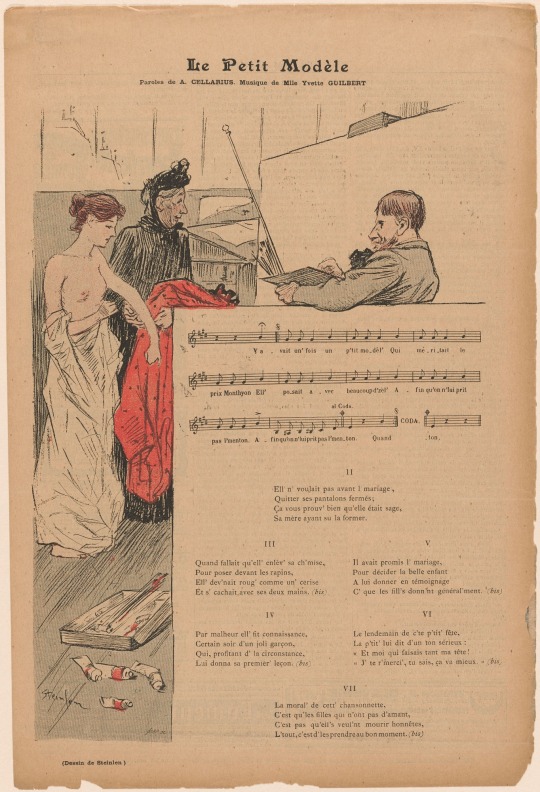
Voilà une chanson à fredonner, pour le principe, en se promenant dans la charmante impasse du petit modèle, dans le XIIIe arrondissement de Paris.


#Steinlen#modèle vivant#Yvette Guilbert#histoire des modèles vivants#life models#modèle d’arts plastiques#chansons anciennes#beaux-arts#Illustration
0 notes

